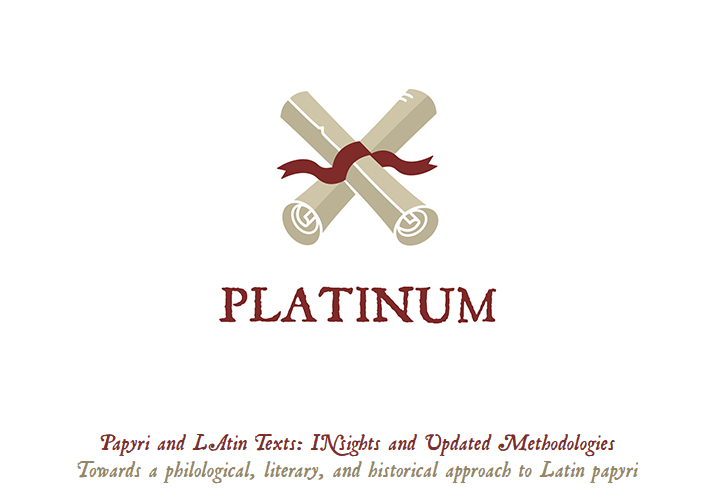
Programma: IDEAS – ERC Starting grant
Coordinatore: Prof.ssa Maria Chiara Scappaticcio
Staff: Prof. Arturo De Vivo (Professore Emerito di lingua e letteratura latina), Bernini Andrea (assegnista), Breuer Birgit Elisabeth (borsa di ricerca), Buccheri Francesca (collaboratrice esterna), Colella Lucia Consuelo (assegnista), Cozzolino Maria Francesca (borsa di ricerca), Fontanella Valeria (borsa di ricerca), Internullo Dario (assegnista), Iovine Giulio (assegnista), Maffei Fernanda (borsa di ricerca), Miglionico Marco (borsa di ricerca), Morone Vincenzo Alessandro (borsa di ricerca), Pedone Michele (borsa di ricerca), Pezzella Alessia (dottoranda Filologia XXXIV ciclo), Salati Ornella (assegnista), Stornaiuolo Antonio (borsa di ricerca), Tafuri Felicia (borsa di ricerca)
SSD: L-ANT/03
Area: 10
Data inizio: 01/04/2015
Data fine: 31/07/2022
Proroga: 31/12/2022
Costo totale: € 1.485.712,00
Ente capofila: Università degli Studi di Napoli Federico II
Altri partner: CeDoPal, École Pratique des Hautes Études, The Collaborative Research Centre 933 (University of Heidelberg), British Library.
Abstract:
The aim of PLATINUM is to scrutinize Latin texts on papyrus from several points of view in order to highlight their substantial contribution to our knowledge of innovations in ancient Roman literature, language, history, and society, especially in the multilingual and multicultural contexts of the Eastern part of the Empire between the 1st century B.C. and 8th century A.D. The first phase of the project will consist in assembling, updating and publishing critical editions, in order to present a new and more accurate corpus of Latin papyri on an easily accessible online platform. The second phase will be focused on providing the texts with a specific, pluridisciplinary commentary that gives new insights on Roman culture.
Coming mainly from Egypt and other Roman provinces (as well as Herculaneum and Ravenna), Latin papyri deserve more scholarly attention not only from papyrologists and paleographers, but also from scholars of Latin language, as well as intellectual and cultural historians of Rome. Latin papyri, tablets, and ostraka (potsherds) are constantly increasing in number through archaeological discoveries. Because they are so rare, they are even more valuable than the Greek papyri, which have garnered much attention. Latin papyri have hitherto represented a border-line field of study that has not been fully exploited either by papyrologists or by scholars of Latin literature. Moreover, the obsolete bibliography and the considerable number of unpublished texts make the study of Latin papyri (and bilingual Latin-Greek, Latin-Coptic, Latin-Punic texts) – whether literary (e.g. Cicero, Vergil, law), paraliterary (grammar, medicine, magic), or documentary (letters, official registers, receipts) – a pioneering and challenging task.
A more thorough study will reveal the untapped potential of Latin texts on papyrus for renewing our knowledge of the circulation and reception of Latin language and education, as a cultural engine in Mediterranean societies.
